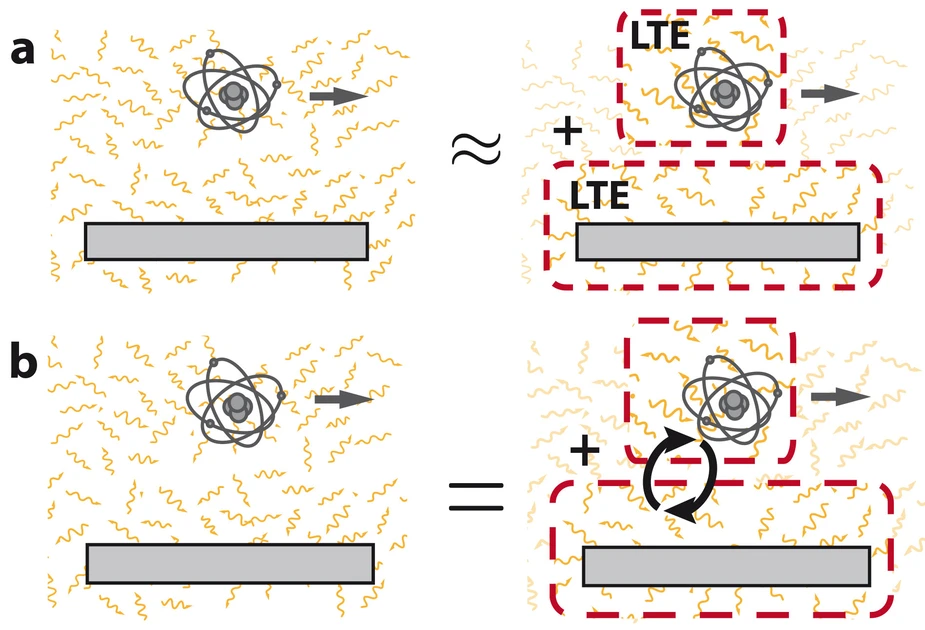Quantum Friction: Beyond the local equilibrium approximation
Scientists from HU and Max-Born-Institute report on detailed new physical insights
Systems out of thermodynamic equilibrium are very common in nature. In recent years they have attracted constantly growing attention because of their relevance for fundamental physics as well as for modern nanotechnology. In a collaborative effort, the Theoretical Optics and Photonics group at the Max-Born-Institut and Humboldt-Universität zu Berlin together with colleagues from the Universität Potsdam, Yale University and the Los Alamos National Laboratory now report on detailed new physical insights of non-equilibrium atom-surface quantum friction.
A particular class of non-equilibrium phenomena is represented by dynamical van der Waals/Casimir forces acting between atoms, molecules and surfaces. These forces, whose origin is deeply rooted in quantum theory, are at the origin of contactless (quantum) friction between two objects that, when separated by a few tens of nanometers, move relative to each other. Unfortunately, the detailed quantitative description of non-equilibrium systems is rather challenging and the most common approaches rely on the assumption that corrections to the associated equilibrium characteristics are relatively small. However, the validity of these procedures and of the corresponding approximations has been scarcely verified, inevitably limiting the reliability of the results.
In stark contrast with widely accepted assumptions that dominate the existing literature, the researchers have shown that the local thermal equilibrium (LTE) approximation, which treats interacting subsystems in a general non-equilibrium system as being locally in equilibrium with their immediate environment, fails dramatically when applied to the study of quantum friction.
Using general quantum statistical arguments and exactly solvable models, the researchers determined that the LTE approximation underestimates the magnitude of the drag force by approximately 80%. Considering that the LTE approximation has been the workhorse for the theoretical description of many non-equilibrium phenomena, ranging from thermal energy transport to non-equilibrium dispersion forces, these results demonstrate that LTE-based calculations lack rigorous justification and have to be re-examined.
Besides addressing fundamental questions in the highly interdisciplinary field of van der Waals/Casimir forces, these new results will have considerable impact on many other applications of current interest in non-equilibrium physics, such as miniaturized traps for ultra-cold gases (atom chips), nano-electromechanical systems (NEMS) and near-field radiative heat transfer. Altogether, this work provides a quantitative analysis whose conclusions represent a substantial advance in the understanding of non-equilibrium quantum physics.
Original publication:
Phys. Rev. Lett. 117, 100402 (2016) doi:10.1103/PhysRevLett.117.100402
"Failure of local thermal equilibrium in quantum friction"
F. Intravaia, R.O. Behunin, C. Henkel, K. Busch, and D.A.R. Dalvit
Contact
Max-Born-Institut für Nichtlineare Optik und Kurzzeitspektroskopie
Max-Born-Straße 2 A
12489 Berlin
Dr. Francesco Intravaia
Tel.: +49 30 6392-1261
E-Mail: nabu(at)mbi-berlin.de
